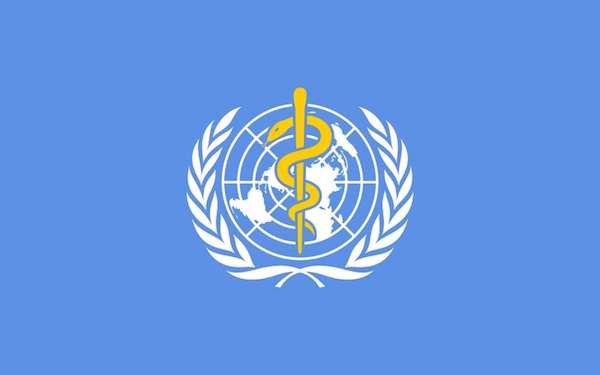DOSSIER World Sight Day: actions that count

Thursday, October 14, 2021 was held the 5th edition of the World Sight Day . Under the aegis of the World Health Organization (WHO), she recalls that the fight against blindness must be waged with vigor since about 80% of cases can be avoided . It is also an opportunity to raise awareness on other issues related to visual health, and especially to allow free screening. Finally, the organization of this day also makes it possible to take stock of the situation of visual health in the world .
World Sight Day: what concept?
There is, for all subjects, in all fields, a world day. World Sight Day takes place every second Thursday in October and serves to bring attention to the global problem of eye health. This year, it took place on October 14, 2021.
Like any health problem, eye health has an impact on the quality of life, but also on education, 'use. Income conditions are very often a cause of good or bad visual health.
Because the difficulty is of course in access to care but in awareness, that it is in industrialized countries, within companies, in institutions where the production of services is very strong, and therefore subjected to work on screen, or in developing countries, where the problems are often elsewhere. [= ]

In 2021, the IAPB (International Agency for the Prevention of Blindness) wanted to build this day on individuals' own eye health. With the slogan "Everyone Counts" and the hashtag "Love Your Eyes", they encouraged all participants to come together under one banner.
The challenge? “Live-stream eye tests, exams and screenings to unique and unusual places around the world, in all time zones and regions. We also encourage our members and their partners to get involved and share their screenings on their social media platforms. "
A photo competition is also organized on the theme of World Sight Day (WSD) to raise awareness and promote the actions of the IAPB.
This day is now a milestone in the world of optics and is supported by more than 150 member organizations of the IAPB, including most of the eye care NGOs around the world, the leading professional organizations in ophthalmology and optometry , teaching hospitals and companies, working together to eliminate blindness and preventable visual impairment.
https: // www. organizations, associations or private companies, offer free screening tests in order to encourage populations in need or not, to take their visual health into consideration.
The organization of the world sight day is also an opportunity to take stock of the state of global vision health .
Global Visual Health: Everyone's Business
Among eye diseases, some can lead to complete and irreversible blindness .
WHO highlights several characteristics of eye diseases, which it should be associated with a global social context, since on the planet, all age groups (from infants to the elderly) all social classes, all sexes are concerned.
[ =] 
Of course, poverty has an impact on the causes as well as the consequences of visual impairments . Difficult access to healthcare in some parts of the world, and people with disabilities are, according to one report, more vulnerable to abuse and violence. As a bonus, their stigma and discrimination prevent them from participating and contributing to family and community life on an equal basis.
WHO insists therefore on the need not to be concerned only with the treatment of eye diseases , but to organize prevention through the planning of eye care responding to needs across the globe. World Sight Day actions attempt to ensure this response. vision. Indeed, a large number of people experience vision problems without having reached a well-defined threshold of visual impairment.
In addition, there are diseases that do not cause always difficulties while others cause them without having crossed at a given moment the threshold of visual impairment.
Disturbing figures
The Eleventh International Classification of Diseases (ICD-11, 2018) distinguishes two distinct groups of visual impairments. Those affecting distance vision, as corrected, and those affecting near vision, as corrected.
Impairments affecting distance vision:
- mild – corrected visual acuity less than 6/12;
- moderate – corrected visual acuity less than 6/18;
- severe – corrected visual acuity less than 6/60;
- blindness – corrected visual acuity less than 3/60.
Impairments affecting near vision:
- visual acuity less than N6 or N8 at 40 cm with the existing correction.

To this we must add different factors because the individual experience of visual impairment can differ from one person to another. Indeed, the availability of care, prevention and treatment interventions or even access to visual rehabilitation (this concerns optical devices but also, for example, canes for the visually impaired), information or transport, are all imponderables which will have consequences, sometimes heavy, on the results.
On a global scale, in 2020, it is estimated that approximately 1.3 billion people live with some form of near or far vision impairment.
In far vision, 188.5 million people have mild visual impairment and 217 million have moderate to severe visual impairment, while 36 million people are blind. In addition, 826 million people live with a near vision impairment.
These figures relate to both developed and developing countries. Population growth as well as the aging of the population tend to increase the risk of having more and more people with visual impairment.
Multiple causes
There are many causes of visual impairment. The main ones being:
- uncorrected refractive errors
- cataract
- age-related macular degeneration
- glaucoma
- diabetic retinopathy
- corneal clouding
- trachoma
WHO also estimates that the main causes of blindness are:
- unoperated cataract: 35%
- uncorrected refractive errors: 21%
- glaucoma: 8%
The observation is made that the great majority of these afflictions are due to a lack of treatment and to uncorrected defects, confirming the will of struggle of the international actors.
From one country to another, the causes may vary. For example, the proportion of visual impairment attributable to cataracts is higher in low- and middle-income countries than in higher-income countries.
In countries So-called "developed" diseases such as diabetic retinopathy , glaucoma and age-related macular degeneration are, on the contrary, more common.
Prevention from an early age
As seen previously, there is no age for developing a visual impairment . Work with children in particular is extensive and essential.

The causes of visual impairment in children vary from country to country. In developing countries, congenital cataract is one of the main causes, while in higher income countries retinopathy of prematurity is more common.
C t is especially the over-development of myopia over the years that worries. In Asia, it is increasingly mentioned as an epidemic. Here again, the lack of control from an early age tends to worsen the situation.
In France, 7 out of 10 parents think that vision control is only necessary. after 3 years. The child's first ophthalmological consultation, during a routine check-up, is in marked decline: 39% in 2019 against 55% in 2013
The digital lifestyle of the 21st century century has also passed through this. Ultraviolet rays and blue light from screens , viewed all day long, will considerably prevent any improvement.
World Sight Day: communication element for a precise plan
To prevent the majority of visual impairments, nearly 80% preventable, you must be able to perform interventions and raise awareness . A global plan has been put in place by the WHO. This plan, adopted in 2013 at the World Health Assembly , makes it possible to develop tools to evaluate the provision of services in all countries.
This plan notably targets the evaluation of eye health services but also diabetes, to prevent diabetic retinopathy, and vision rehabilitation for those whose deficiency could prove to be irreversible.
The day world of sight fits into this pattern. If it remains an element of communication, it makes it possible to report on a situation which requires a strengthening of human, technical and financial resources, and constant attention.


